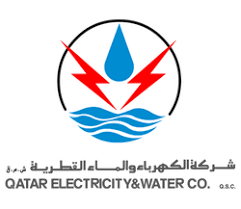
Qatar Electricity and Water – Comprehensive Overview
1. Introduction
Qatar’s electricity and water sectors are essential pillars of the country’s infrastructure, ensuring reliable power and water supply for its rapidly growing economy and population. The main organization responsible for overseeing electricity and water services in Qatar is the Qatar General Electricity & Water Corporation (Kahramaa), along with other key players such as Qatar Electricity & Water Company (QEWC).
2. Qatar General Electricity & Water Corporation (Kahramaa)
A. Overview
The Qatar General Electricity & Water Corporation, commonly known as Kahramaa, is the sole authority responsible for electricity and water transmission and distribution in Qatar. Established in 2000, Kahramaa operates under the Ministry of Energy Affairs and ensures the sustainable supply of electricity and potable water throughout the country.
B. Key Responsibilities
- Electricity and Water Distribution – Ensuring efficient transmission and distribution of electricity and water to residential, commercial, and industrial sectors.
- Infrastructure Development – Investing in smart grids, desalination plants, and renewable energy sources to modernize Qatar’s utilities sector.
- Regulatory Compliance – Enforcing national and international standards for electricity and water management.
- Sustainability Initiatives – Promoting energy conservation and water efficiency through public awareness campaigns and new technologies.
C. Recent Initiatives and Projects
- Tarsheed Program – Launched in 2012, this initiative promotes energy efficiency and water conservation, aiming for a 25% reduction in electricity consumption and 35% reduction in water usage.
- Smart Metering – Implementation of digital smart meters for better monitoring and efficient energy use.
- Solar Energy Projects – Kahramaa is leading efforts to integrate renewable energy, including large-scale solar power plants.
3. Qatar Electricity & Water Company (QEWC)
A. Overview
The Qatar Electricity & Water Company (QEWC) is a partially government-owned company responsible for power generation and water desalination in Qatar. Established in 1990, QEWC supplies over 60% of the country’s electricity and 70% of its desalinated water.
B. Key Power and Water Projects
- Ras Laffan Power Company (RLPC) – One of the largest power and desalination plants in the region.
- Umm Al Houl Power Plant – Producing over 2,520 MW of electricity and 136 million gallons of desalinated water per day.
- Siraj Energy – A partnership with Qatar Petroleum to develop large-scale solar power projects.
C. International Expansion
QEWC is actively expanding its operations beyond Qatar, with investments in power and water projects in Oman, Kuwait, and Jordan, as well as partnerships with international energy firms.
4. Renewable Energy and Sustainability Goals
A. Solar Energy Development
- Al Kharsaah Solar Power Plant – Qatar’s first large-scale solar power plant, with a capacity of 800 MW, significantly contributing to Qatar’s renewable energy targets.
- Qatar National Vision 2030 – Aims to diversify energy sources and reduce dependence on fossil fuels.
B. Water Security Strategy
Qatar relies heavily on desalination for its water supply, as the country has minimal freshwater resources. Key initiatives include:
- Water Security Mega Reservoirs – A project designed to increase Qatar’s water storage capacity to over 1,500 million gallons.
- Reverse Osmosis (RO) Technology – New desalination plants adopting energy-efficient water purification techniques.
5. Conclusion
Qatar’s electricity and water sector is a critical component of the country’s economic and social development. With a strong focus on sustainability, technological innovation, and infrastructure expansion, Kahramaa and QEWC are driving efforts to ensure a stable, efficient, and environmentally friendly utility network for the future.
